
Battle for Germany is a board wargame published by Simulations Publications Inc. (SPI) in 1975 that simulates World War II operations in Germany during 1945
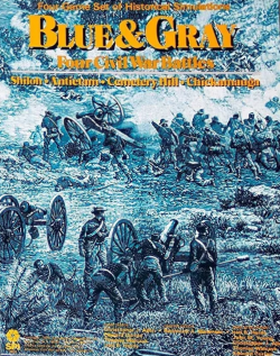
Blue & Gray: Four American Civil War Battles is a board wargame originally published by Simulations Publications, Inc. (SPI) in 1975 that simulates four battles from the American Civil War.

The American Civil War: 1861–1865 is a board wargame published by Simulations Publications Inc. (SPI) in 1974 that is a strategic simulation of the American Civil War.
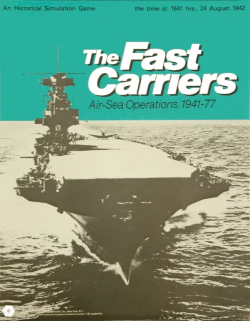
The Fast Carriers, subtitled "Air-Sea Operations, 1941–77" is a board wargame published by Simulations Publications Inc. (SPI) in 1975 that simulates naval combat involving aircraft carriers from 1941 to the mid-1970s.

Island War: Four Pacific Battles is a collection of four board wargames published in 1975 by Simulations Publications Inc. (SPI) that simulates various battles between American and Japanese forces during the Pacific Campaign of World War II.

MechWar '77, subtitled "Tactical Armored Combat in the 1970s", is a board wargame published by Simulations Publications Inc. (SPI) in 1975 that simulates hypothetical tank combat in the mid-1970s between various adversaries, using the same rules system as the previously published Panzer '44.

Napoleon at War, subtitled "Four Battles", is a collection of four board wargames published by Simulations Publications Inc. (SPI) in 1975 that simulates various battles fought by Napoleon.

Bloody Ridge, subtitled "Turning Point on Guadalcanal, September 1942", is a board wargame published by Simulations Publications Inc. (SPI) in 1975 that simulates the Guadalcanal Campaign during World War II. The game was originally published as part of the Island War: Four Pacific Battles "quadrigame" — a gamebox containing four games simulating four separate battles that all use the same rules. Bloody Ridge was also published as an individual "folio game."

Westwall: Four Battles to Germany is a collection of four board wargames published by Simulations Publications (SPI) in 1976 that simulate battles in Europe in late 1944 and early 1945 during World War II.

Blue & Gray II, subtitled "Four American Civil War Battles", is a collection of four board wargames originally published by Simulations Publications, Inc. (SPI) in 1975 that each simulate a battle from the American Civil War. It is the sequel to Blue & Gray published earlier in the year. Each of the four games was also published as individual "folio games."

Bar-Lev, subtitled "The Yom-Kippur War of 1973", is a board wargame published by Conflict Games in 1974, only months after the end of the Yom Kippur War. The game simulates battles on the two major fronts of the war: the Golan Heights and the Suez Canal. The game proved very popular, and a second edition was published by Game Designers' Workshop (GDW) in 1977.

Frigate: Sea War in the Age of Sail is a board wargame published by Simulations Publications Inc. (SPI) in 1974 that simulates naval combat in the 18th and 19th century Age of Sail.

Jena-Auerstadt: The Battle for Prussia is a board wargame published by Simulations Publications Inc. (SPI) in 1975 that simulates the twin battles of Jena and Auerstadt in October 1806. It was one of four games that were part of the "quadrigame" titled Napoleon at War, but it was also released as an individual "folio game" packaged in a shrinkwrapped cardstock folio. Jena-Auerstadt was rated highly in a 1976 poll of favorite wargames, but critics questioned whether its simplicity was capable of simulating a complicated two-part battle.
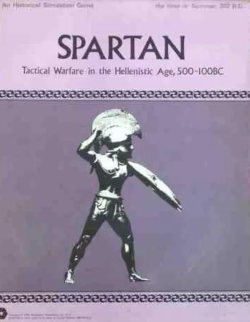
Spartan: Tactical Warfare in the Hellenistic Age, 500–100BC is a board wargame published by Simulations Publications, Inc. (SPI) in 1975 that simulates battles during the rise of Greece to the period of Roman rule. Originally published by SPI as Phalanx, the game was revised and republished with the title Spartan as part of a series called PRESTAGS.

Saipan: Conquest of the Marianas, June 1944 is a board wargame published by Simulations Publications Inc. (SPI) in 1975 that simulates the Battle of Saipan during World War II. Saipan was originally published as one of four games in the popular collection Island War: Four Pacific Battles, but was also released as an individual game.

Okinawa: The Last Battle, April 1945 is a board wargame published by Simulations Publications Inc. (SPI) in 1975 that simulates the Battle of Okinawa during World War II. Okinawa was originally published as one of four games in the popular collection Island War: Four Pacific Battles, but was also released as an individual game.

Seelöwe: The German Invasion of Britain, 1940 is a board wargame published by Simulations Publications Inc. (SPI) in 1974 that simulates the hypothetical Unternehmen Seelöwe, Hitler's planned 1940 invasion of England during World War II that was never executed.
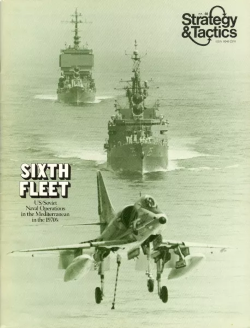
Sixth Fleet, subtitled "US/Soviet Naval Warfare in the Mediterranean in the 1970s", is a board wargame published by Simulations Publications Inc. (SPI) in 1975 that simulates a hypothetical attack against NATO forces in the Mediterranean Sea by naval forces of the Soviet Union. The game did not sell well, and several critics found that the tactics used in the game more closely resembled Napoleonic land battles rather than naval warfare in the 1970s.
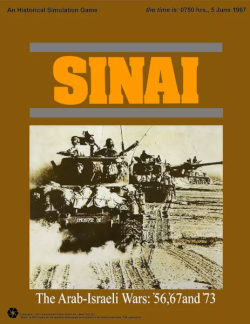
Sinai: The Arab-Israeli Wars – '56, '67 and '73 is a board wargame published by Simulations Publications Inc. (SPI) in 1973 that simulates three conflicts in the Middle East: The 1956 Suez Crisis, the 1967 Six-Day War, and the just-completed 1973 Yom Kippur War. The staff of SPI had been developing a wargame simulating a hypothetical Middle East conflict when war broke out in October 1973. Using newspaper and television reports, SPI found that their envisioned simulation was not accurate, and quickly redeveloped the game, releasing it only weeks after a ceasefire had been signed. The game proved very popular, and remained a best-seller for SPI during the 1970s.
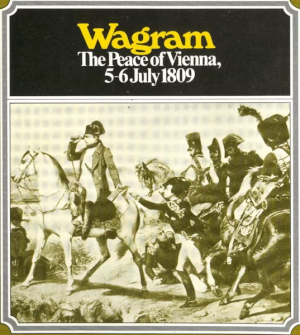
Wagram: The Peace of Vienna, 5–6 July 1809 is a board wargame published by Simulations Publications Inc. (SPI) in 1975 that simulates the Battle of Wagram in July 1809. It was one of four games that were part of the "quadrigame" titled Napoleon at War, but it was also released as an individual game with a set of metal miniatures. Wagram was rated highly in a 1976 poll of favorite wargames, and critics called it the best of the four games in the Napoleon at War box.




















